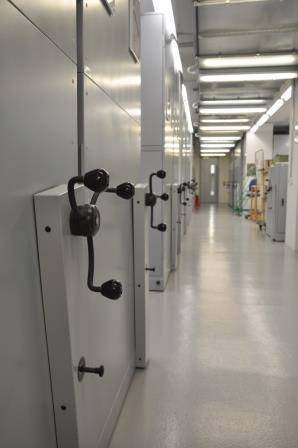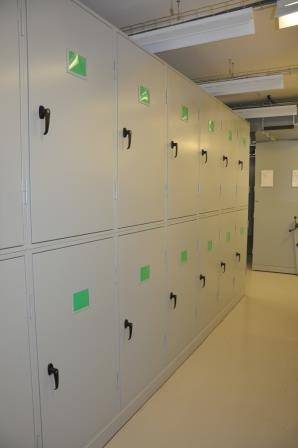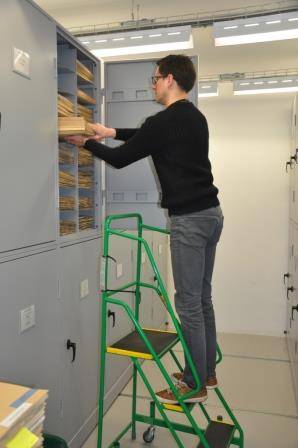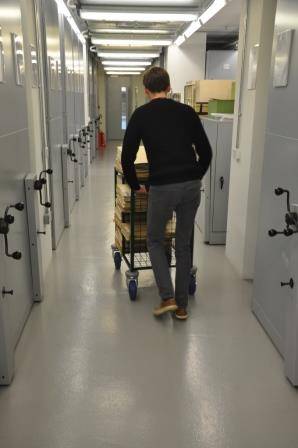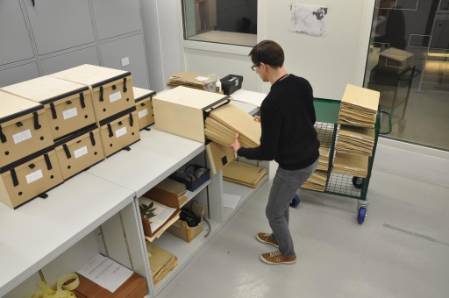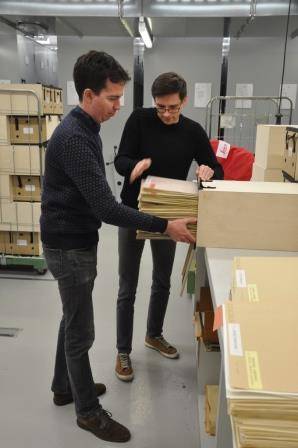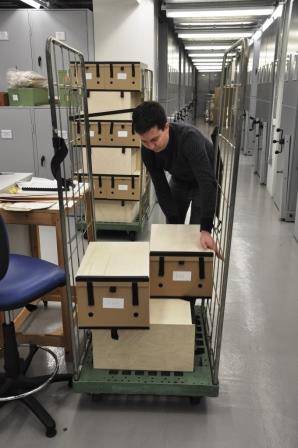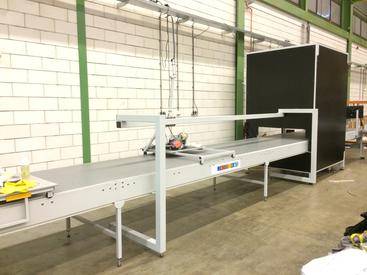We introduced our new digital herbarium project in a previous post: with the herbarium of the Royal Botanic Gardens, Kew, we are moving 70,000 plant specimens temporarily to Picturae, a specialist company in the Netherlands, so that the herbarium sheets can be imaged in the most speedy and effective way.
The images will then be sent to Suriname for transcription of the typed and hand-written information on the sheets into electronic form. The information includes the species identification, the place and date of collection and often the collector, that can link to field notebooks and other resources. The images and data will then be accessible via online databases to scientists and conservation biologists and others for research and better understanding of plant distribution and biogeography.
This is what it all looked like as we packed up and got ready to go - not many people see this, so worth showing:
and the grey cupboards on the compactors
Jacek Wajer removing specimens of Dioscoreaceae (yams and related plants)
And wheeling them away on a trolley
Steve Cafferty preparing the transport boxes for the specimens
Jacek putting the specimens into the boxes
with colleague Jonathan Gregson
And Jonathan fitting the boxes onto the trolleys on which they will travel to Picturae in the Netherlands
More blogs to follow as the project progresses! #DigitalHerbarium #NHM #Kew
@KewScience @NHM_Science



